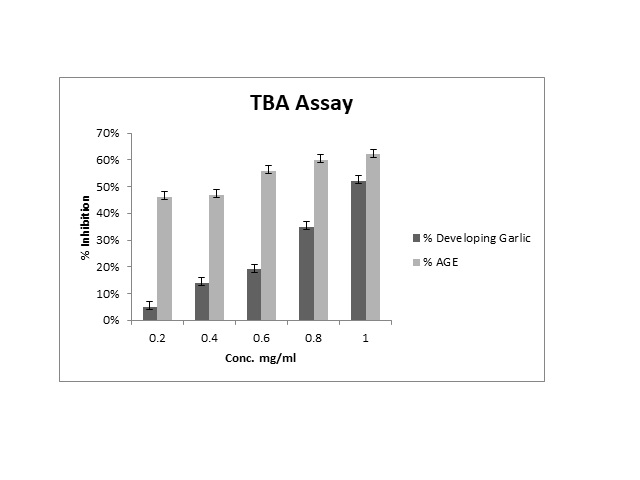Comparative Phytochemical and Antioxidative Analysis of Raw and Aged Garlic Extract; Indicating the Therapeutic Potential of Stable Organosulfur Compounds
DOI:
https://doi.org/10.5530/ctbp.2021.6.17Keywords:
Reactive Oxygen Species, Garlic, Antioxidants, Cardiomyocytes, StressAbstract
Garlic (Allium sativum L.) has long been used as a healthpromoting and disease-prevention food. However, because of the pungent Oder and indigestion, eating garlic to achieve its medicinal effectiveness has limitations. Aged Garlic Extract (AGE) is a garlic derivative made by ageing garlic cloves for 20 months. Garlic ageing transforms reactive organosulfur compounds including S-allyl cysteine (SAC), Diallyl disulfide (DADS), S-allyl mercapto cysteine (SAMC), and others into stable compounds. The current research was planned to compare the antioxidant and cardioprotective capacity of raw garlic and aged garlic, as well as the newly developed allyl compound, which is thought to have exceptional therapeutic benefits as raw garlic. Qualitative methods were used to assess phytochemical screening for raw and aged garlic extract. Antioxidant activity was assessed using DPPH, ABTS, Nitric oxide, and Hydrogen peroxide. In addition, the ferric reducing antioxidant power (FRAP) assay and lipid peroxidation activity using FTC and TBA were carried out. The cytotoxic dose of aged and raw garlic was optimised to evaluate the cardioprotective impact. MTT assay was used to improve the cytotoxic dose of aged and raw garlic. Giesmsa staining was used to examine the morphology of the cells below and above the cytotoxic dose. When compared to raw garlic, this study suggests that aged garlic extract has higher antioxidative and cardioprotective efficacy.



